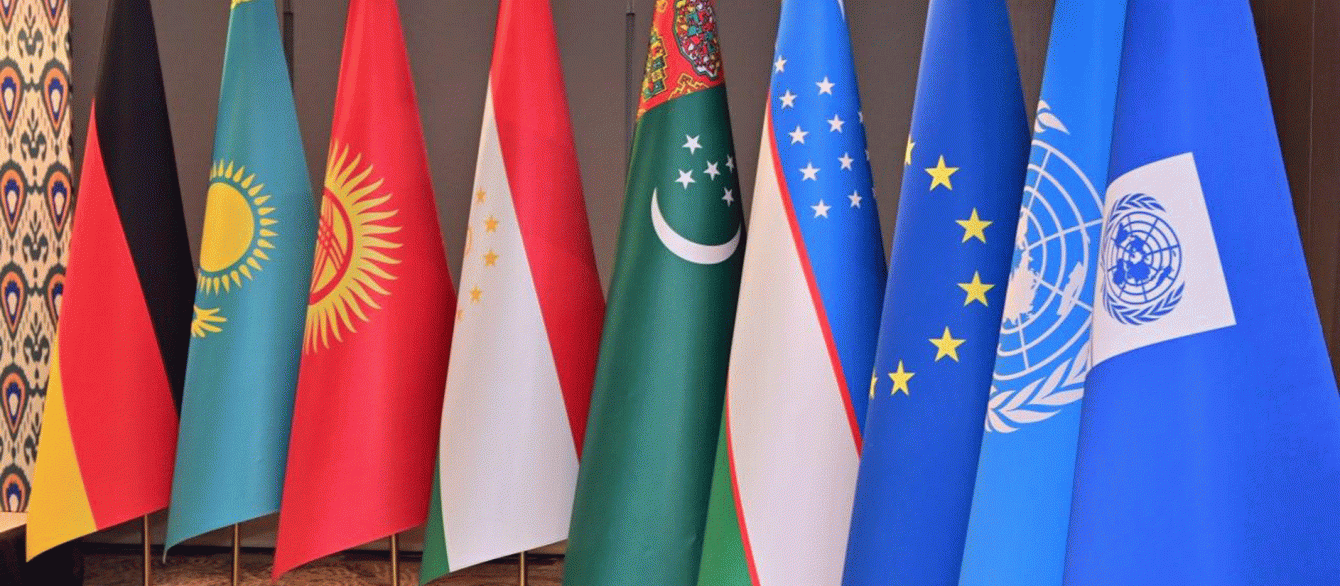Regional cooperation is essential for Central Asian countries if they are to mitigate climate change and ensure their energy security. On January 30, 2023, DCRES and the CAREC Institute hosted a panel on the past, present, and future of regional energy and water cooperation. Key takeaways from the discussion are summarized below.
-
Climate change has put the water and energy security of Central Asian countries at risk. Glaciers are shrinking (decreasing in size by 30% over the last 50-60 years), while the demand for water and energy in the region is growing. The population of Central Asia is projected to increase from 77 million people today to 110 million by 2050. Climate, water, and energy challenges have inherent social consequences that will likely trigger migration and instability at the local level with the potential for spillover effects across the region.
-
These threats cannot be addressed only at the national level--they require regional cooperation. In 2022, the Interstate Commission for Water Coordination, part of the International Fund for saving the Aral Sea, marked its thirtieth anniversary. Kyrgyzstan froze its membership in 2016, but before that, it was the only platform where all five Central Asian countries would cooperate on political arrangements and policy as well as on technical terms. More importantly, this multilateral institution helped foster exchanges of national and regional expertise in the field of water engineering.
Moreover, the Central Asian governments have held several meetings to discuss the improvement of existing institutions and ways to deal with new issues regarding energy, climate change, and disaster management. Kyrgyzstan, Uzbekistan, and Kazakhstan recently agreed on a roadmap for the construction of the Kambarata-1 hydropower plant. This is a very positive step if the three countries reach an agreement on how to jointly develop, construct, fill, and operate this hydropower system in a way that is mutually beneficial.
External actors have been actively involved in strengthening regional cooperation. USAID, for example, has done so through its flagship Power Central Asia project, which is based on three pillars: market liberalization, clean energy development, and regional connectivity. In Kazakhstan alone, USAID leveraged roughly $1.6 billion in new energy sector investments through renewable energy auctions in 2022. USAID has also actively assisted the Kyrgyz government in the procurement of green power, Tajikistan by reducing electricity losses, and Turkmenistan by decreasing methane emissions. The organization hosted the first Central Asia Clean Energy Forum in Almaty, which attracted hundreds of participants from the region and beyond. In cooperation with many other multilateral and bilateral development institutions, USAID is supporting the Central Asia Regional Electricity Market (CAREM) initiative which aims to introduce a reliable regional electricity market, optimize electricity prices through trade, improve transparency, and balance the use of energy and water resources in Central Asia.
Despite notable achievements in regional cooperation, obstacles remain. In the water sector, these include the lack of interagency coordination, a shortage of funding and staffing, and a short-term focus on water management rather than broader development issues. In the energy sector, challenges include aging energy infrastructure and grid (which are not equipped to accommodate growing volumes of wind and solar energy), a lack of robust market mechanisms, a negligibly low share of renewable energy sources, and the shortage of investment.
Although intraregional trade has increased by 50% in the last five years, it is still around 10% of the Soviet-era volume, and still less attractive than inter-regional trade. Differences in energy mixes and prices across countries (driven by divergent energy production systems and costs), the impact of demand peaks in summer and winter, and low energy efficiency have hindered progress toward a regional electricity market.
In short, the region lacks a shared regional vision on climate change. Progress would fundamentally require trust among the countries of Central Asia and a willingness to take the interests of all sides into account and compromise. Ultimately, the pace and extent of regional cooperation will depend on the ability of governments to find synergies and develop regional priorities.
Policy Recommendations
The moment is ripe for the Central Asian governments to develop a strategic vision and reach formal agreements on energy, water, and climate at a regional level. It is necessary to finalize the agreement on confronting climate change, crafted by the Interstate Commission for Sustainable Development, and cultivate new pacts on energy and water cooperation.
-
It is critical that regional cooperation focuses on the development of human and scientific capital for water management, energy, and climate change. Policymakers should be more active in consulting the scientific community, considering measures to stimulate research, and establishing a regional educational program to prepare a new generation of professionals, specializing in climate, water, and energy nexus.
-
Regional cooperation should focus on the rehabilitation of existing and construction of new intra- and interregional energy-generating facilities and infrastructure.
-
Governments should actively incentivize more private investment, bring in additional expertise, and strengthen regulations to decrease the cost of sustainable investments. These national-level measures could then evolve into region-wide action.
-
Given the local effects of climate change, the priority has to be on resilient infrastructure and institutions, especially at the local level. Subnational authorities will be critical in assessing and reacting to the risks related to climate change and energy security.
-
It is necessary to systematically address the effects of climate change on rural areas. One potential solution could be to develop individual access to renewables for rural households to help them overcome energy deficits. Ensuring access to clean drinking water is equally critical. Future activities undertaken by development agencies like USAID could target rural consumption of energy resources to reduce coal consumption in households, schools, hospitals, and other public buildings.
-
In light of the Biden administration’s commitment to climate resilience efforts globally, Central Asian countries could benefit from initiatives like the Emergency Plan for Adaptation and Resilience, Global Methane Pledge, and the Climate Finance Plus Initiative. The latter involves billions of dollars of incentives from the US government to provide financing for exporting US clean energy technologies into emerging markets like Central Asia. The US government also funds initiatives that empower youth, especially women and girls, to be leaders in resilience and climate change activism and drive change from the grassroots level.






